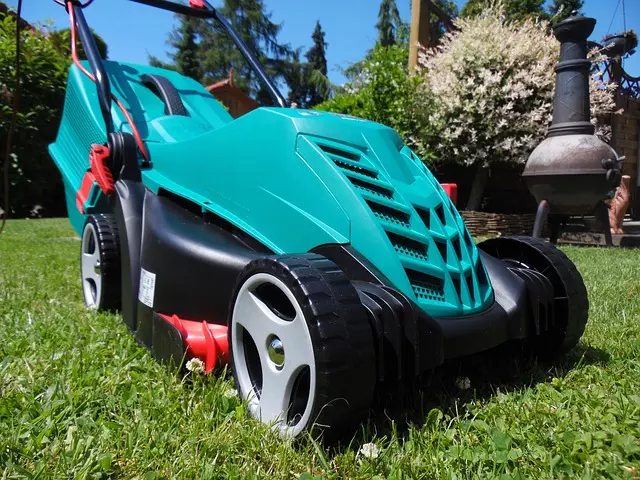Lawn Care and Landscaping thrive through balanced fertilization, focusing on macronutrients NPK for targeted grass growth. Choosing the right fertilizer and integrating organic matter improves soil health. Weeds can be controlled manually, with herbicides, or organic solutions like corn gluten, maintaining a vibrant lawn via holistic strategies aligned with natural grass cycles for optimal aesthetics and sustainability.
Lawn fertilization and weed control are essential components of any comprehensive lawn care and landscaping strategy. A healthy, vibrant lawn requires balanced nutrients and a weed-free environment to thrive. This article guides you through understanding the fundamentals of lawn fertilization, selecting the right nutrients, and implementing effective weed control strategies. By integrating these practices, you’ll achieve optimal results in your lawn care and landscaping endeavors, creating a lush, inviting outdoor space.
- Understanding Lawn Fertilization: Choosing the Right Nutrients
- Effective Weed Control Strategies for a Healthy Lawn
- Integrating Fertilization and Weed Control: Tips for Optimal Lawn Care and Landscaping
Understanding Lawn Fertilization: Choosing the Right Nutrients

In the realm of lawn care and landscaping, fertilization plays a pivotal role in nurturing a lush, healthy green space. Understanding the nuances of nutrient selection is key to achieving this. The first step involves recognizing that not all fertilizers are created equal; each carries a specific blend of nitrogen (N), phosphorus (P), and potassium (K), commonly represented as NPK ratios. These macronutrients are essential for grass growth, with nitrogen promoting lush foliage, phosphorus fostering root development, and potassium enhancing overall plant health.
When choosing a fertilizer, consider your lawn’s unique needs. Factors such as climate, soil type, and existing vegetation influence nutrient requirements. For instance, warm-season grasses may require higher nitrogen levels during their active growth periods, while cool-season varieties might benefit from a balanced formula year-round. Incorporating organic matter or slow-release fertilizers can also enhance soil health and nutrient retention, leading to more sustainable lawn care practices.
Effective Weed Control Strategies for a Healthy Lawn

Maintaining a lush, green lawn free from weeds is an essential aspect of lawn care and landscaping. Implementing effective weed control strategies is crucial to achieving this goal. One of the most common methods involves manual removal, which requires dedicated time and effort but offers precise control over targeted weeds. For larger areas, herbicides can be applied, ensuring quick results. Selectivity is key when choosing herbicides to avoid damaging desired grass species.
Additionally, cultivating a robust lawn through proper fertilization creates an environment that suppresses weed growth. Fertilizers provide essential nutrients, promoting grass health and density, making it harder for weeds to establish themselves. Integrating organic matter into the soil further enhances turfgrass vigor and reduces the need for chemical interventions. Combining these strategies offers a holistic approach to lawn care and landscaping, ensuring a healthy, weed-free yard.
Integrating Fertilization and Weed Control: Tips for Optimal Lawn Care and Landscaping

When it comes to lawn care and landscaping, integrating fertilization and weed control is a game-changer for achieving a lush, vibrant green lawn. Fertilizers provide essential nutrients that promote grass growth, while weed control measures help eliminate unwelcome plants that can compete for these nutrients. For optimal results, consider applying fertilizers at the appropriate time of year, typically in spring and fall, to coincide with the grass’s natural growth cycles. This ensures the nutrients are readily available when the lawn needs them most.
To effectively manage weeds, explore a range of eco-friendly options such as manual weeding, selective herbicides, or organic solutions like corn gluten. Manual weeding may take more time but is kind to the environment. Selective herbicides target specific weed species without harming your grass. Corn gluten, a natural product, inhibits weed growth by robbing them of essential nutrients and moisture. By combining these strategies as part of your lawn care and landscaping routine, you’ll not only enjoy a healthier, more attractive lawn but also contribute to sustainable practices.
Incorporating effective lawn fertilization and weed control practices is key to achieving a lush, vibrant lawn. By understanding your lawn’s nutrient needs and implementing targeted weed management strategies, you can significantly enhance both the health and aesthetics of your outdoor space. Remember, the right balance of nutrients and consistent weed prevention will not only improve your lawn’s appearance but also lay the foundation for a thriving, durable landscape that requires less maintenance over time. These integrated techniques are essential components of any comprehensive Lawn Care and Landscaping strategy.
